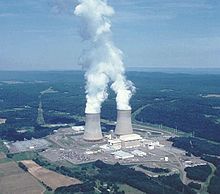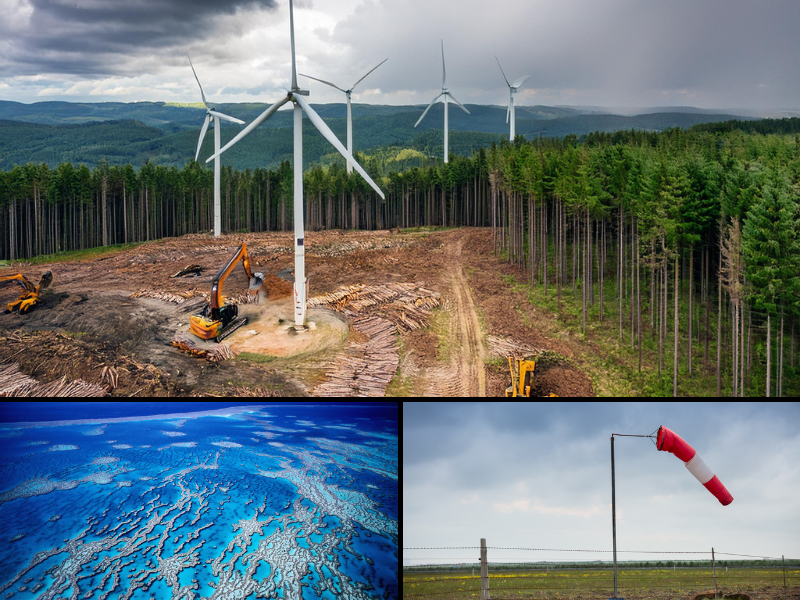Until recently, most energy analysts focused on challenges to expansion and new builds when discussing the future of America’s nuclear power sector. Today, more and more observers are focused on the likelihood of an early shutdown of existing reactors due to a combination of market forces and distortions created by government intervention. According to market observers, 5 or 6 of the nation’s 103 operating reactors could be at risk of early retirement over the next several years. Indeed, as many as a quarter of civil nuclear power facilities are currently cash-flow negative or at risk of becoming so.
Most related commentary emphasizes the impact of abundant, cheap shale gas on the economic viability of reactors—particularly smaller units located in competitive state electricity markets. A growing number of analytical reports, however, also point to the negative impact of renewable energy mandates and subsidies (direct and indirect) on the competitiveness of nuclear power. Today, 30 states and the District of Columbia have renewable portfolio standards (RPS) or other mandated renewable capacity policies, according to the Energy Information Agency. Most of these policies were enacted before the shale gas revolution and the Environmental Protection Agency’s increased regulation of coal-fired power generation. As renewable targets ramp up in the coming years, we believe that reactors located within RPS states will come under increasing pressure, causing a number of them to shut down.
The early retirement of those reactors would have a substantial impact on the local economy. A job at a U.S. nuclear facility pays nearly 40 percent more than the average local salary, and the average plant generates close to $500 million a year in total output for the community in which it is located.
Moreover, a shutdown of a number of reactors would cumulatively affect university physics and engineering programs, material science laboratories, manufacturers, and the defense establishment—including the U.S. Navy’s ability to recruit personnel to help operate its nuclear carriers and submarines. Certainly, with fewer employment opportunities available on separation from military life, recruits would be discouraged from seeking military work in a nuclear-related function.
We recognize the benefits of lower cost energy to manufacturers and consumers. From an economic and national security perspective, there is no question, for example, that shale gas has greatly benefited the nation.
However, the Nuclear Energy Program at CSIS plans to work with interested stakeholders to help educate the public and the policymaking community on the unintended consequences of subsidized generation on America’s civil nuclear fleet—effects that are not generally well understood or appreciated. In particular, we wish to examine the impacts of renewable tax credits at the federal level and renewable portfolio and efficiency mandates, as well as subsidized gas plants at the state level. Given the indispensable role civil nuclear power plays in promoting U.S. national security interests and achieving air quality standards, we believe that there is a critical need for a more comprehensive, integrated discussion on stationary power issues, particularly as federal and state governments look to increase the share of renewable sources in the electricity mix.
The Wind Production Tax Credit: An Example of Unintended Consequences
Recent studies examining the impact of renewable energy policies point to their disruptive impact on competitive electricity markets, including the operation of nuclear plants located in those areas. The wind production tax credit (PTC) of $23 per MWh has been the focus of much of this research because of its link to negative pricing for electricity (i.e., when power providers must pay “congestion” charges to the grid to take their electricity).
Over the past decade, wind facilities have increased 10-fold to over 60 GW—thanks mostly to state renewable requirements and the wind PTC, which incents wind farms to produce electricity regardless of market demand, oftentimes during the late night and early morning when demand for electricity is at its lowest. Because wind generators are rewarded the tax credit, they are willing to pay “congestion” charges to the grid as long as those charges do not exceed the credit, thus guaranteeing them a profit. Negative pricing has grown from a very low occurrence before the introduction of renewable mandates to much higher levels, accounting for up to 13 percent of all hourly prices in some U.S. regions. Those numbers increase drastically in hours in which the wind blows more often.
Non-wind generators do not receive the tax credit. Consequently, other power sources, including nuclear facilities, must pay the congestion charge without the corresponding tax benefit. Nuclear reactors, which attempt to run at a set level of output for technical, safety, and cost recovery reasons, are hit hard by the increased cost of operation. Industry forecasts suggest that nuclear facilities will be forced to pay hundreds of millions of dollars in extra costs over the coming years because of negative pricing resulting from renewable policies. These costs will clearly increase as renewable energy targets ramp up in many states between now and 2025.
We are already seeing these impacts play out in several regions. The shutdown of the Kewaunee nuclear plant in Wisconsin, for example, was blamed on low natural gas prices and large volumes of new wind generation. And in Texas, Public Utility Commission chairman Donna Nelson testified at a state Senate Natural Resources hearing last September that “the market distortions caused by renewable energy incentives are one of the primary causes I believe of our current resource adequacy issue…[T]his distortion makes it difficult for other generation types to recover their cost and discourages investment in new generation.” Exelon chief Christopher Crane went even further, warning the press earlier this year that “there is a very high probability that existing safe, reliable nuclear plants will no longer be competitive and will have to be retired early” if the PTC remains in place.
In a recent report by the Organization for Economic Cooperation and Development (OECD), analysts cautioned that high-fixed-cost technologies, such as nuclear, will leave the market due to their load and profitability loss resulting from increased penetration of wind power. Because of the departure of these despatchable sources from the grid, the volatility of electricity prices will increase substantially. OECD thus suggests that policymakers “swiftly” work to address this growing challenge by educating the public on the need to protect electricity supply security. We agree with this assessment.
Given the fact that roughly half of the nation’s nuclear fleet is located in competitive electricity markets that also have renewable portfolio standards and other energy mandates and subsidies, we are clearly concerned about the future competitiveness of our nuclear units, which already face rising maintenance and fuel costs. Moreover, we anticipate greater deployment of wind installations because of the extension of the PTC, which was a component of January’s deficit deal. In addition, President Obama has suggested making the wind PTC permanent starting in 2014. Although most observers doubt the political viability of such a proposal, it remains unclear how long the production tax credit will remain in place.
As part of our examination of such policies, the Nuclear Energy Program at CSIS will explore with interested stakeholders policy options that could alleviate this pressure on the nation’s existing fleet of reactors. Understanding the longer-term impact of energy mandates and subsidies (direct and indirect) on our ability to maintain the current number of reactors and our options for expanding the fleet is clearly important to the national interest.
[First published by the Center for Strategic and International Studies (CSIS)]




